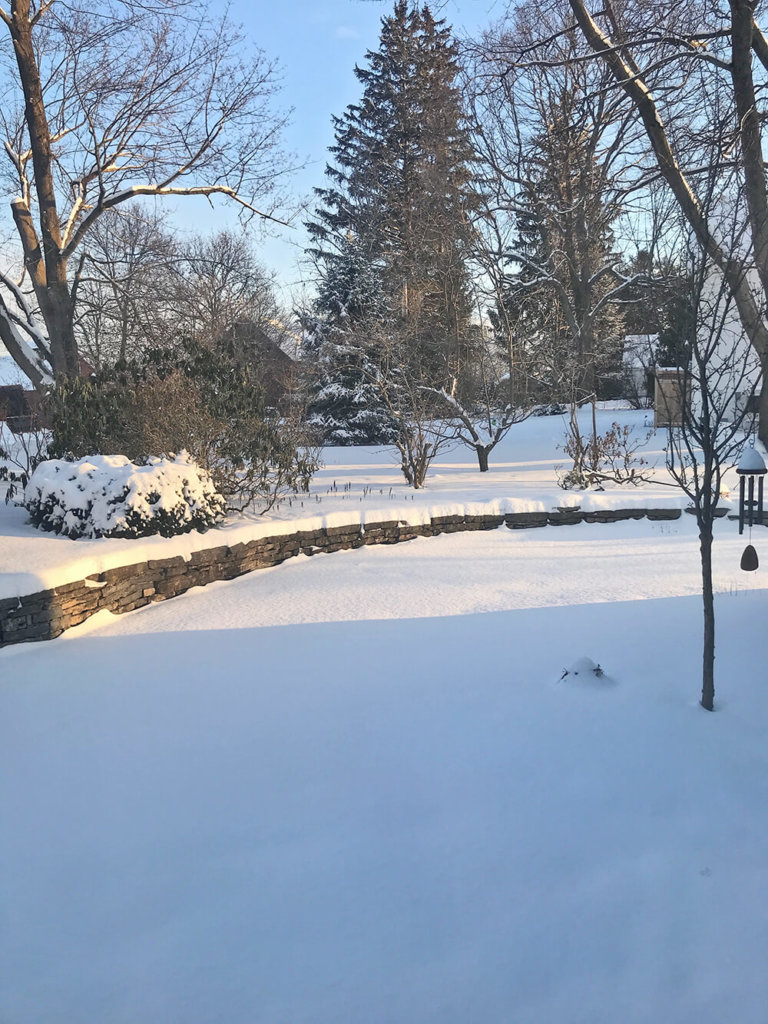In The Garden

With snow falling and icicles dripping, what’s a passionate gardener to do in the depths of February? It’s still a bit early for seed starting. The houseplants have limited needs right now. I have a suggestion: there is something I’ve found invaluable for years now and want to encourage you to try. Do you have a garden journal? How about a compendium of your special plants? I actually have both, and they are not as time-consuming to maintain as it would seem.
The compendium was begun over a decade ago when our garden was about to be part of a tour. I realized that I would want to be active in greeting fellow gardeners and that they would have lots of questions. Then I realized that in the rush of the tour it would be a miracle to have names of species and cultivars at my fingertips. So I grabbed a legal pad and went outside and made quick notes about what was important and what was here when we moved in. I had a collection of receipts from purchases (with good information included). I made a rough draft for this hurried list. Later I found a notebook and transposed my list. Here is where February comes in: It’s a great time to get organized.
I made sections for some of my collections, such as shrubs, grasses, roses, herbs, perennials. All were permanent additions to the garden, no annuals. Along with species and cultivar, I listed year acquired, place of purchase, how many and where planted in the yard. All of this fit neatly onto one line (with abbreviations). As this gardener’s life went on, there would be deletions and always additions.
I can’t tell you how often I have returned to my compendium to find the exact name of a plant or particular cultivar for a friend or for my own faulty memory. Where did I get that Bartzella peony? What year was the Sensation lilac planted?
My other suggestion is the garden journal. It takes on the more comforting role of story teller. Weather, chores accomplished, first spring mow, last frost, notes of gifts and failures. I find there is always something to tell no matter what the season. I admit this is not an everyday thing or even every week. When you are actively gardening in May and June when one can hardly take a breath, there isn’t much time to write detailed notes. However, there are rainy days and some too hot to venture out or evenings after supper when the sun is setting to take a few moments to gather one’s thoughts. I promise you it will become easier and easier, and you will be so thankful you took the time.
One thing I like to do that has value is to compare years. You can see rainfall or snowfall patterns. When I was making floral arrangements for church services, I could assume the bloom times of certain plants with pretty accurate guesses. I’d know what was available. Imagine knowing what will be at peak for a special occasion—wedding, reunion, anniversary?
On choosing your blank journal, there is no need to get too fancy. I suggest a plain-bound, lined paper moleskin type of book. This is important if you’d like to keep it for your records. Even an ordinary spiral schoolbook will do the job. Try to keep your book with pen nearby so it’s easy to add the day’s notes.
I hope some of you readers will be inspired to try my suggestions. I’d love to hear if you do.
Joan has lived in Charlotte for 21 years. One of her first endeavors heren was to become a master gardener. “Inheriting a well-made garden inspired me to keep it going,” she says.

